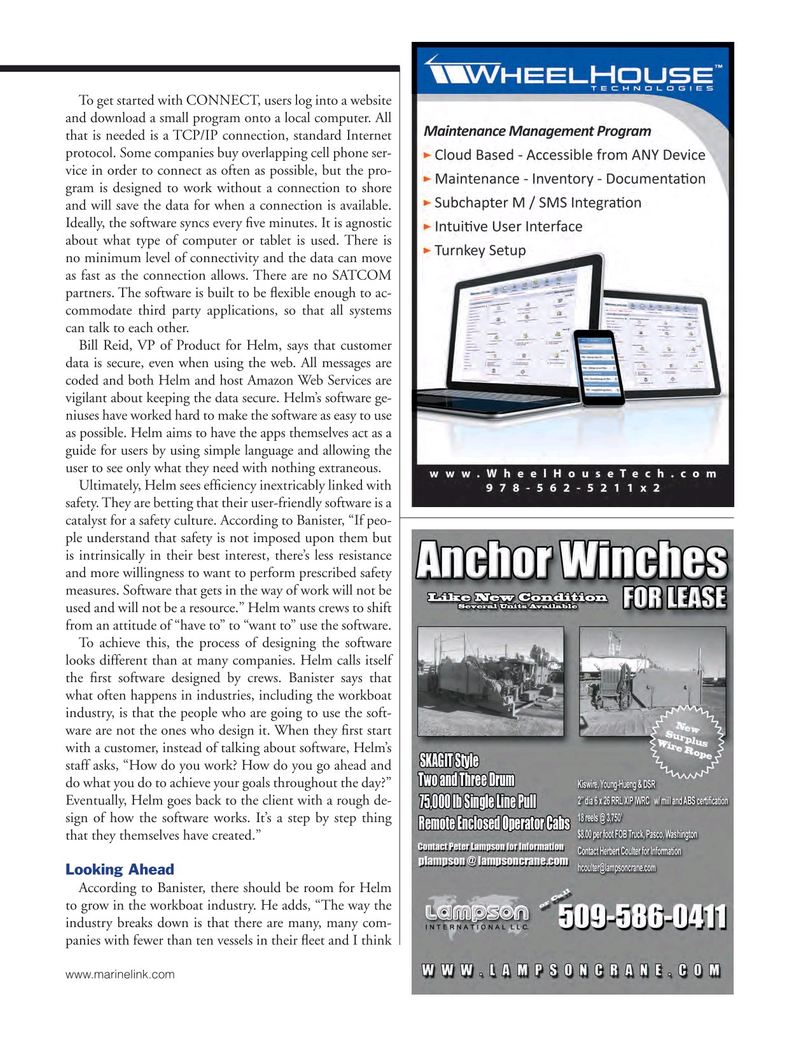
Page 33: of Marine News Magazine (March 2015)
Fleet Optimization
Read this page in Pdf, Flash or Html5 edition of March 2015 Marine News Magazine
To get started with CONNECT, users log into a website and download a small program onto a local computer. All that is needed is a TCP/IP connection, standard Internet protocol. Some companies buy overlapping cell phone ser- vice in order to connect as often as possible, but the pro- gram is designed to work without a connection to shore and will save the data for when a connection is available.
Ideally, the software syncs every ? ve minutes. It is agnostic about what type of computer or tablet is used. There is no minimum level of connectivity and the data can move as fast as the connection allows. There are no SATCOM partners. The software is built to be ? exible enough to ac- commodate third party applications, so that all systems can talk to each other.
Bill Reid, VP of Product for Helm, says that customer data is secure, even when using the web. All messages are coded and both Helm and host Amazon Web Services are vigilant about keeping the data secure. Helm’s software ge- niuses have worked hard to make the software as easy to use as possible. Helm aims to have the apps themselves act as a guide for users by using simple language and allowing the user to see only what they need with nothing extraneous.
Ultimately, Helm sees ef? ciency inextricably linked with safety. They are betting that their user-friendly software is a catalyst for a safety culture. According to Banister, “If peo- ple understand that safety is not imposed upon them but is intrinsically in their best interest, there’s less resistance and more willingness to want to perform prescribed safety measures. Software that gets in the way of work will not be used and will not be a resource.” Helm wants crews to shift from an attitude of “have to” to “want to” use the software.
To achieve this, the process of designing the software looks different than at many companies. Helm calls itself the ? rst software designed by crews. Banister says that what often happens in industries, including the workboat industry, is that the people who are going to use the soft- ware are not the ones who design it. When they ? rst start with a customer, instead of talking about software, Helm’s staff asks, “How do you work? How do you go ahead and do what you do to achieve your goals throughout the day?”
Eventually, Helm goes back to the client with a rough de- sign of how the software works. It’s a step by step thing that they themselves have created.”
Looking Ahead
According to Banister, there should be room for Helm to grow in the workboat industry. He adds, “The way the industry breaks down is that there are many, many com- panies with fewer than ten vessels in their ? eet and I think www.marinelink.com

 32
32

 34
34
